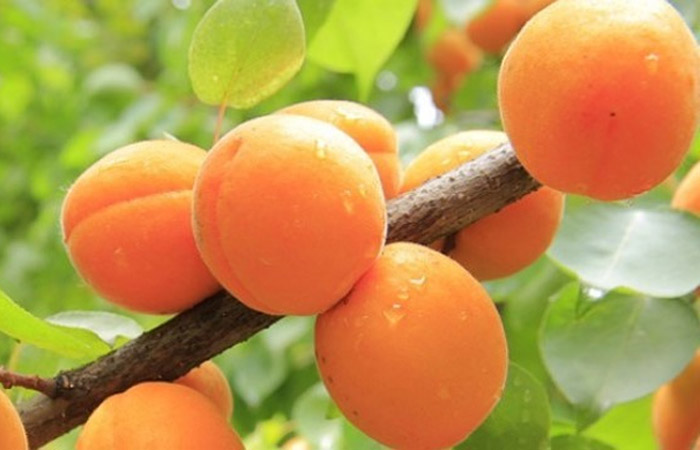Do you know what really is the pits? When people say they are going to do something I never do. So here I am, with the long-awaited part three to this series. So far, we have discussed Cherries, Plums, Cherry-Plums, Apricots and Almonds. Some are easy to grow here and some are much more complicated. Some are native to our area and some have been brought in from far away. In the end, they all have one thing in common. The pits! They are all members of the Prunus family though they may not look at all similar.
So what do we have left to discuss? I briefly mentioned Apricots in my last blog, but did not go in depth. Manchurian Apricot produces a small fruit that looks a lot like a peach. These trees are known for their beautiful pink spring flowers and impressive fall colour which is best described as, well, apricot! Primarily yellow to gold, but with streaks of orange and red throughout making a tree look quite a bit like its own ripe fruit.
While they are commonly sold in Manitoba, they are not what you would call “low hanging fruit”. For one thing they can grow up to 30 feet tall making them a little tricky to harvest. I usually just wait until the fruit comes to me, knocks down by the wind when it is ripe. Apricots are quite sensitive to wind and cold. A late spring frost can damage the flowers resulting in no fruit that year. It is very important to make sure your apricot tree is planted in an appropriate location to ensure survival and potential for fruit bearing. Shelter from north and west wind is essential but an area with shade over the tree’s roots is also very helpful. The shade over the roots will prevent melting snow, this causes the ground to stay frozen longer into the spring. If the ground stays frozen longer it may cause a tree to remain dormant longer. This would result in a later blooming time and reduce the risk of frost damage to the flowers… in theory.
The next and final member of the Prunus family I want to tell you about is also the one we have the most trouble with in Manitoba: Peaches.
Peach trees cannot survive our harsh cold winters. They can grow just fine in southern Ontario with the right care and where the winters are milder. I have seen young peach trees grown in containers at local greenhouses and garden centres which are kept in the greenhouse all winter long, and then brought outdoors in the spring time once it is safe to do so. I’ve only heard of one peach tree that was successfully grown outdoors in Manitoba. One of our customers shared his experience growing a peach tree (and no he did not buy it from us!). It is planted in his yard near Landmark and he used what he calls “The Siberian Method”. The tree is planted in the yard with a generous amount of mulch around the base to help insulate the roots through the winter. Once the cold weather comes and the tree begins to shut down, he builds a temporary shed around the tree! This includes insulation and heating to ensure the tree does not go below -22 degrees Celsius.
The essential key is removing it from the outdoor environment for winter! As you can imagine, this is extremely complicated: so we won’t be selling peaches any time soon.
And to put the confusion to rest – a Nectarine is a hairless mutant of a peach, not the other way around. I was lost for truth on that one for years…




